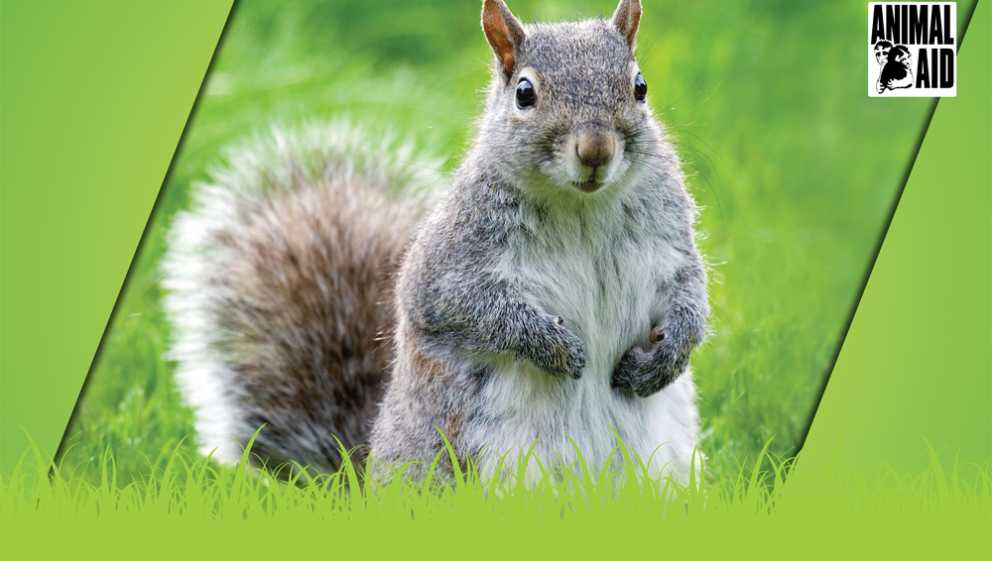Ban on the use of lead shot – finally!
Posted 10 Jul 2025

Posted on the 10th April 2017
Grey squirrels will be trapped, forced into bags and bludgeoned to death, under plans to cull them in an attempt to save red squirrels - despite the fact that mass culling has long proven to be an insufficient means of conservation.

Greys are blamed for numerous atrocities – from environmental destruction to the near extinction of the red squirrel. As a consequence they have been slaughtered in their millions by means of poisoning, shooting and bludgeoning.
Below we bust some of the most common misconceptions and myths about grey squirrels; please take a look and share with your friends and family.
Under the latest plans, squirrels will be trapped in metal traps potentially for hours. They won’t sit in the traps and go to sleep – they will spend the time biting the metal bars and scratching the metal floors with their claws in fear. They will exhaust themselves, time after time as they repeatedly attempt to escape. Eventually a trapper will turn up and pick up the traps, and the squirrel will be in a complete panic. Then the squirrel will be tipped into a small sack, and the trapper will try to force the squirming animal’s head into the end of the bag, so that he can club it to death. There is no doubt that there will be many occasions when the trapper has to bludgeon the animal several times to kill them.
Except in the months of September to March, baby squirrels are totally reliant on their mothers. When the mother is trapped and killed, her babies will slowly die of thirst or starvation in their nests. Does this sound humane to you?
Research – such as that from the University of Bristol – has shown that there is very little evidence to show that culling grey squirrels is an effective way of conserving red squirrels. The money and resources spent on culling grey squirrels could be used much more effectively. The replenishment of conifer forests, in which red squirrels thrive, would benefit the population. Recent research has also found that planting yew trees is extremely beneficial for sustaining a healthy red squirrel population.
Red squirrel populations also benefit from a change in supplementary feeding at feed stations from shared feeders – which increase the risk of disease transmission – to scattered feeding.
Grey squirrels were first brought into Britain in the late 1800’s to be displayed in zoos and wildlife parks; a number of them were subsequently released. However, before this red squirrels were the subject of immense persecution – very similar to that faced by grey squirrels today. Red squirrels were branded a ‘pest’ and were slaughtered in their hundreds of thousands in the 18th and 19th centuries, which brought them to the brink of extinction. To supplement the population, red squirrels were imported from Scandinavia and central Europe. In fact, DNA studies conducted on red squirrels show that the vast majority of those living in the UK are descendants of reds introduced often long after grey squirrels were established in the UK.
As above, red squirrels were also branded ‘pests’ who damaged trees and killed birds. This resulted in culls of red squirrels which brought them to the brink of extinction. In fact one could still obtain a licence to cull red squirrels up until the 1970’s.
As well as this, deforestation as a result of war, agriculture and for fuel caused red squirrels to become extinct in Ireland and South Scotland by the early 18th century. This was before grey squirrels were imported from North America. Red squirrels had become rare in the Scottish Highlands by the early 19th century. A decrease in ancient woodland and replacement of conifer forests with the much more profitable broadleaf oak trees have resulted in the British landscape being far better suited for grey squirrels to thrive, rather than red squirrels.
Greys are also far more hardy than reds. A series of tough winters in the 19th and early 20th centuries hit the red squirrels very badly – whereas the greys generally carry more body fat, resulting in a better ability to survive such weather.
Grey squirrels are immune to the parapoxvirus, otherwise known as squirrel pox. A study by researchers from the University of Liverpool (undertaken on the National Trust site in Formby, Merseyside) found that red squirrels at the site are starting to develop an immunity to the virus. The study showed that 10% of red squirrels at the site had pox antibodies in their blood, which allow the body to recognise and respond to an infection quickly.
One red squirrel whom was captured – nicknamed Clark, after Clark Kent (Superman) – tested positive for pox, and was cared for at an RSPCA wildlife centre where he recovered. He was tagged and released back into the wild. When he was recaptured, he was found to be negative and had no symptoms of the virus – showing promising signs that red squirrels are beginning to develop an immunity. Additionally, the Zoological Society of London has identified eight cases in which red squirrels living in the wild have survived infection.
Posted 10 Jul 2025

Temperatures are rising and it’s time to get outdoors, enjoy the weather and tuck into some delicious vegan food! Thanks to an abundance of plant-based options now available, there’s an alfresco option for every tastebud...
Posted 09 Jul 2025
